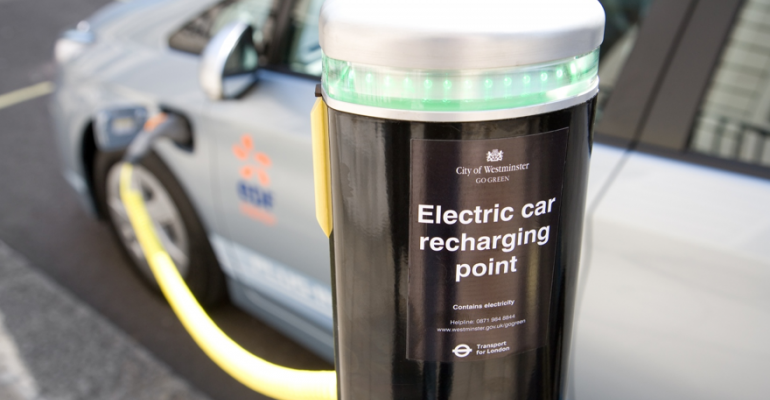The U.K. government continues its race into the future with an extra £100 million ($133.1 million) in its latest budget to help people buy electric cars and a requirement for all new homes to be built with wiring for EV charge points.
“Our future vehicles will be driverless, but they’ll be electric first,” Treasurer Philip Hammond says in releasing the latest U.K. budget. “That’s a change that needs to come as soon as possible.”
“We’ll establish a new £400 million ($532.4 million) charging infrastructure fund, invest an extra £100 million in the plug-in car grant and £40 million ($53.2 million) in charging R&D.
“And we will clarify the law so that people who charge their EVs at work will not face a benefit-in-kind charge from next year.”
Society of Motor Manufacturers and Traders CEO Mike Hawes welcomes the renewed commitment to new and future vehicle technology but says he’s disappointed there is no additional funding for the incentivization of plug-in hybrids.
“The investment in charge points and new incentives to encourage the take-up of electric cars is a positive step to boost buyer confidence, which will be essential to increasing market share,” Hawes says in a statement.
Hawes says the greatest concern after Hammond’s budget is the continuing mixed messages around diesel which, SMMT says, will only deter and confuse the public further.
“Diesel buyers will not face any additional taxation for the next six months, but thereafter will face additional charges which will undermine fleet-renewal efforts, which are the best and quickest way to address air-quality concerns,” he says.
“Manufacturers are investing heavily in the latest low-emission technology,” Hawes says. “However, it’s unrealistic to think that we can fast-track the introduction of the next generation of clean diesel technology, which takes years to develop, in just four months.”
Hawes says the budget also does nothing to remove the oldest, most polluting vehicles from U.K. roads.
Hammond announced the government will set out rules so that self-driving cars can be tested without a safety operator by 2021, a decision that doesn’t sit well with simulator manufacturer Cruden.
It released a statement calling for the U.K. automotive industry to use driving simulators for safer, cheaper and more controllable testing for driverless cars.
“To get repeatable and controlled testing for Level 3, 4 and even Level 5 vehicles, it cannot be completed on U.K. roads with real traffic without risking accidents; hence the need for the industry to embrace simulator testing,” Cruden development engineer Jelle van Doornik says.
“We believe that extensive testing of the interaction between the driver and the car, with many different types of people, is required to get the necessary acceptance of the car’s decisions in handover moments and emergency scenarios.”
Hammond says fuel taxes will remain frozen for the eighth year in a row, saving drivers £160 ($215) a year on average.
But starting in April, the first-year vehicle excise duty rate for diesel cars that don’t meet the latest emissions standards will go up by one band and the diesel supplement in company car tax will increase one percentage point to 4%.
“Drivers buying a new car will be able to avoid this charge as soon as manufacturers bring forward the next-generation cleaner diesels that we all want to see,” Hammond says.
The measures will not apply to light-commercial vehicles.





